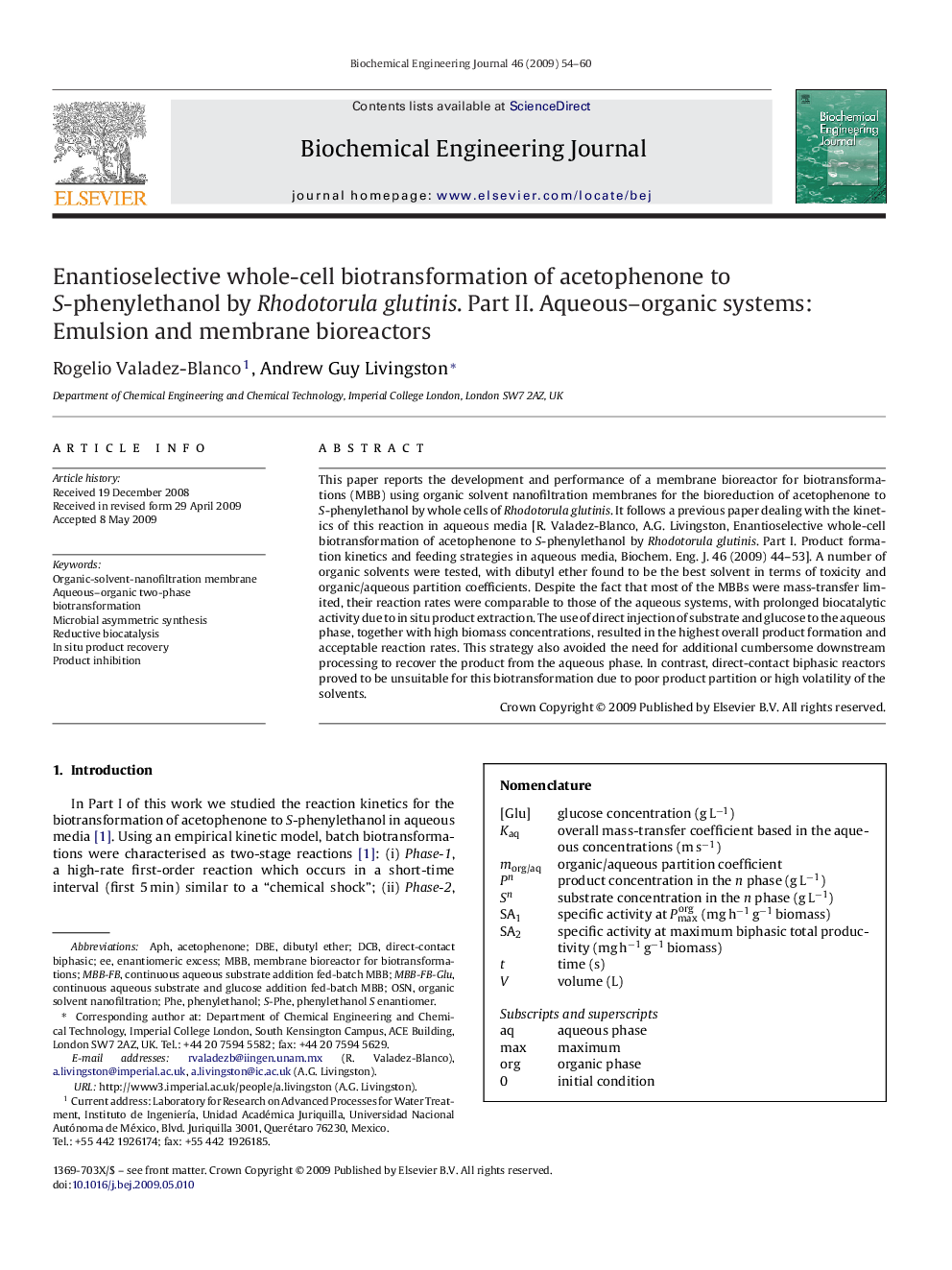| Article ID | Journal | Published Year | Pages | File Type |
|---|---|---|---|---|
| 4230 | Biochemical Engineering Journal | 2009 | 7 Pages |
This paper reports the development and performance of a membrane bioreactor for biotransformations (MBB) using organic solvent nanofiltration membranes for the bioreduction of acetophenone to S-phenylethanol by whole cells of Rhodotorula glutinis. It follows a previous paper dealing with the kinetics of this reaction in aqueous media [R. Valadez-Blanco, A.G. Livingston, Enantioselective whole-cell biotransformation of acetophenone to S-phenylethanol by Rhodotorula glutinis. Part I. Product formation kinetics and feeding strategies in aqueous media, Biochem. Eng. J. 46 (2009) 44–53]. A number of organic solvents were tested, with dibutyl ether found to be the best solvent in terms of toxicity and organic/aqueous partition coefficients. Despite the fact that most of the MBBs were mass-transfer limited, their reaction rates were comparable to those of the aqueous systems, with prolonged biocatalytic activity due to in situ product extraction. The use of direct injection of substrate and glucose to the aqueous phase, together with high biomass concentrations, resulted in the highest overall product formation and acceptable reaction rates. This strategy also avoided the need for additional cumbersome downstream processing to recover the product from the aqueous phase. In contrast, direct-contact biphasic reactors proved to be unsuitable for this biotransformation due to poor product partition or high volatility of the solvents.
